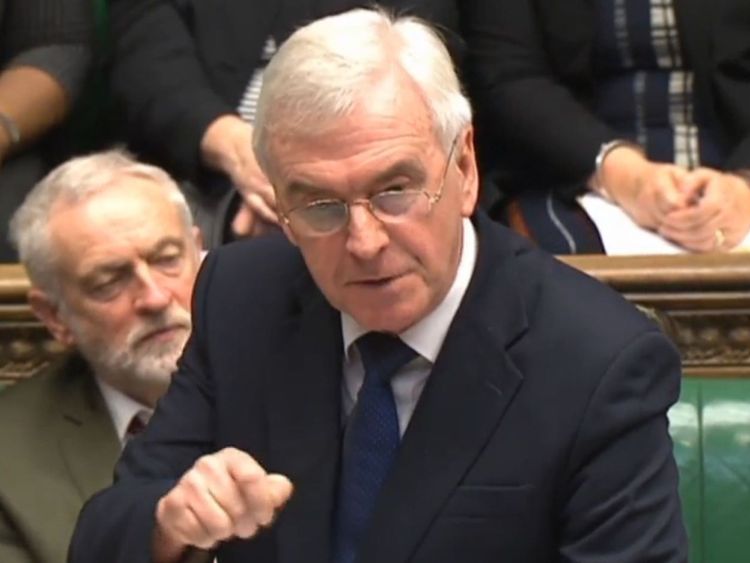Philip Hammond offered the prospect of a boost to public spending later this year as he presented upgraded growth forecasts and predictions of falling inflation, debt and borrowing in his spring statement.
The Chancellor declared there is “light at the end of the tunnel” after years of belt-tightening, as he rejected his “Eeyore” nickname and announced himself “positively Tigger-like” about UK’s fortunes.
But, Labour accused Mr Hammond of “complacency” and a “missed opportunity” to ease pressures on public services, while the Government’s independent forecaster played down suggestions of a major improvement in the public finances.
Since the Chancellor’s Budget in November, the Office for Budget Responsibility (OBR) stated the “outlook for the economy and public finances looks broadly the same”.
SPRING STATEMENT KEY POINTS
:: OBR upgrades GDP growth for this year from 1.4% to 1.5%, although the outlook for 2019 and 2020 remains unchanged at 1.3%
:: Growth prospects for 2021 and 2022 have each been downgraded by 0.1 of a percentage point, to 1.4% and 1.5%
:: Borrowing for the current fiscal year to the end of March is now expected to total £45.2bn, a £4.7bn improvement – not as much as some economists had expected
:: The forecasts also pencil in lower borrowing in coming years, adding up to a cumulative £20.2bn over six years up to and including 2022/23
:: Debt as a proportion of GDP will fall to 77.9% by 2022/23 according to the OBR – but again, the improvements pencilled in fall short of economists’ expectations
:: Meanwhile, Mr Hammond brought forward a revaluation of business rates – designed to be a more accurate reflection of property values – from 2022 to 2021
:: There was also £20m allocated to businesses and universities to research ways to reduce the impact of plastics on the environment, and £80m given to small businesses employing an apprentice
:: On plans announced in November to make tech giants pay their fair share of tax, Mr Hammond said the Treasury had now published potential solutions, reiterating the position that a temporary solution could see firms taxed on revenues rather than profits
On the back of Tuesday’s improved figures, Mr Hammond said: “There is indeed light at the end of the tunnel.”
But he urged Tory MPs to “make absolutely sure” it isn’t shadow chancellor John McDonnell’s “train hurtling out of control in the other direction”, as he attacked Labour’s economic plans.
In the wake of the upgraded forecasts, the Chancellor signalled he could turn on the spending taps for public services at his Budget later this year, along with a pending pay rise for NHS staff.
He told the House of Commons: “If, in the autumn, the public finances continue to reflect the improvements that today’s report hints at then, in accordance with our balanced approach, and using the flexibility provided by the fiscal rules, I would have capacity to enable further increases in public spending and investment in the years ahead.”
After Theresa May agreed the outline of Britain’s withdrawal deal from the EU in December, the OBR said it now had “sufficient clarity” to estimate the cost of the UK’s so-called “divorce bill” at £37.1bn, within the Prime Minister’s predicted range of £35bn to £39bn.
They also forecast UK payments to Brussels as part of the financial settlement would not end until 2064.
On Tuesday, the Government also revealed departmental allocations from a £1.5bn fund to prepare for Brexit, with two-thirds of the cash to be taken by the Home Office, the Department for Environment, HMRC and the Department for Business.
The allocations trigger extra funding for the Scottish, Welsh and Northern Irish devolved administrations.
Mr Hammond claimed the Government is “delivering on our plan” and will “build our vision of a country that works for everyone” and “a country we can all be proud to pass on to our children”.
But, in response, Mr McDonnell accused Mr Hammond of “astounding” complacency.
“We face, in every public service, a crisis on a scale we’ve never seen before,” the shadow chancellor said.
“Hasn’t he listened to the doctors and nurses, the teachers, the police officers, the carers and even his own councillors.
“They are telling him they can’t wait for the next Budget. They’re telling him to act now.”
Mr McDonnell asked if the NHS “can wait another eight months for the life-saving funds it needs”, as he also highlighted a “dangerous crisis” in prisons.
Branding the spring statement as “another missed opportunity” to end austerity, the shadow chancellor added: “Today we have the indefensible spectacle of a Chancellor congratulating himself on marginally improved economic forecasts, while refusing to lift a finger as councils go bust, the NHS and social care are in crisis, school budgets are cut, homelessness has doubled, and wages are falling.”
Liberal Democrat leader Sir Vince Cable branded the spring statement a “non-event” and called for the Government to be “honest” about the need for tax increases to fund public services.
Nick Macpherson, the former top civil servant at the Treasury, described Mr Hammond as “sensible” not to announce any new major spending on Tuesday, adding the UK needs “headroom against future shocks”.
But Paul Johnson, the director of the Institute for Fiscal Studies, told the Chancellor there is “not that much to be Tiggerish about” in the OBR’s forecasts.
He claimed growth forecasts are “dreadful” compared to what was thought in March 2016 and “dreadful by historical standards and dreadful compared with most of the rest of the world”.
From – SkyNews





